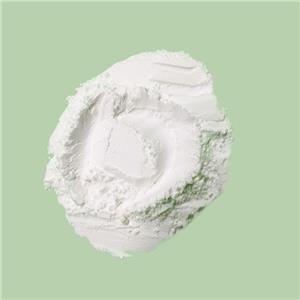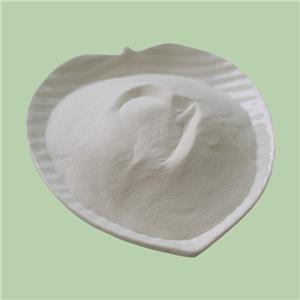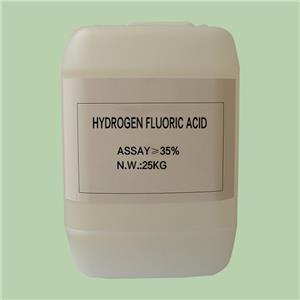Why Potassium Fluoroaluminate (KAlF₄) is Used in Aluminum Smelting
Potassium fluoroaluminate (KAlF4) is an important compound in the aluminum smelting industry, known for its application as a flux in the production of aluminum. The use of fluxes is essential in metal smelting as they aid in reducing the melting point of the ore, improving the fluidity of the molten material, and helping in the removal of impurities. This article will explore why KAlF4 is used in aluminum smelting, detailing its specific role and the advantages it offers in the process.

Understanding the Aluminum Smelting Process
Aluminum is predominantly produced through the Hall-Héroult process, which involves the electrolytic reduction of alumina (Al2O3) dissolved in molten cryolite (Na3AlF6). The process takes place in large electrolytic cells, also known as reduction cells, where aluminum ions are reduced to aluminum metal at the cathode, while oxygen is released at the anode. Cryolite serves as the primary solvent for alumina in this process, and its presence is critical for the efficiency of the electrolysis.
However, cryolite alone is not always sufficient to achieve the optimal conditions for aluminum production. This is where KAlF4 comes into play. As a flux, KAlF4 is added to the molten cryolite bath to enhance its properties, making the smelting process more efficient and economically viable.
Why KAlF4 is Used in Aluminum Smelting
1、Lowering the Melting Point of the Electrolyte
One of the primary reasons for using KAlF4 in aluminum smelting is its ability to lower the melting point of the cryolite-alumina mixture. Cryolite has a relatively high melting point of around 1009°C. Adding KAlF4 to the mixture reduces this melting point, often by several tens of degrees. This reduction is significant because it allows the smelting process to occur at lower temperatures, leading to substantial energy savings. Since aluminum smelting is an energy-intensive process, any reduction in the required temperature directly translates to lower energy consumption and reduced operational costs.
2、Improving the Solubility of Alumina
The solubility of alumina in the electrolyte is a critical factor in determining the efficiency of the smelting process. KAlF4 enhances the solubility of alumina in the molten cryolite bath, allowing for a higher concentration of alumina in the electrolyte. This increased solubility is beneficial because it means that more aluminum can be produced per unit of electrolyte, improving the overall yield of the process. With better alumina solubility, the smelting process becomes more efficient, requiring less time and energy to produce the same amount of aluminum.
3、Reducing the Viscosity of the Electrolyte
Viscosity is another crucial property of the electrolyte in aluminum smelting. A lower viscosity is desirable because it facilitates the movement of ions within the electrolyte, enhancing the efficiency of the electrolysis process. KAlF4 acts to reduce the viscosity of the cryolite-alumina mixture, making the electrolyte more fluid. This improved fluidity ensures better contact between the alumina particles and the molten bath, leading to a more consistent and efficient reduction process. Furthermore, a lower viscosity helps maintain a uniform temperature distribution within the electrolytic cell, which is essential for stable and efficient aluminum production.
4、Preventing the Formation of Anode Effects
Anode effects are undesirable events that occur during aluminum smelting when the concentration of alumina in the electrolyte drops too low. These effects cause a sudden increase in cell voltage, which disrupts the smelting process and reduces its efficiency. KAlF4 helps maintain the proper alumina concentration in the electrolyte, thus minimizing the occurrence of anode effects. By stabilizing the alumina concentration, KAlF4 ensures a more reliable and continuous smelting process, reducing downtime and improving overall productivity.
5、Enhancing the Electrolyte's Electrical Conductivity
The electrical conductivity of the electrolyte is a key factor in the efficiency of the electrolysis process. High electrical conductivity allows for better current flow through the electrolyte, which is necessary for the reduction of alumina to aluminum. KAlF4 contributes to enhancing the electrical conductivity of the cryolite bath, ensuring that the electrolytic process operates at optimal efficiency. Improved conductivity reduces the resistance within the cell, leading to lower energy consumption and more efficient aluminum production.
6、Reducing the Environmental Impact of Smelting
The aluminum smelting process is associated with the release of fluoride gases, which can be harmful to the environment. The use of KAlF4 as a flux can help reduce the amount of fluoride emissions from the smelting process. By improving the efficiency of the electrolyte and stabilizing the process, KAlF4 minimizes the need for excessive adjustments to the electrolyte composition, which can lead to reduced emissions. Additionally, the energy savings achieved by using KAlF4 contribute to a lower carbon footprint for aluminum production, making the process more environmentally friendly.
The Role of KAlF₄ in Aluminum Smelting
1、 Acting as a Solvent Enhancer
KAlF4 enhances the solvent properties of cryolite, making it more effective at dissolving alumina. This role is crucial in maintaining the electrolyte’s ability to hold alumina in solution, which is necessary for continuous aluminum production. The presence of KAlF4 ensures that the electrolyte remains in an optimal state, preventing the precipitation of alumina and maintaining a consistent reduction process.
2、Facilitating the Removal of Impurities
During aluminum smelting, impurities present in the alumina or the electrolyte can accumulate and affect the quality of the final product. KAlF4 helps in the removal of these impurities by promoting their separation from the molten aluminum. As a flux, KAlF4 can react with certain impurities, forming compounds that can be easily removed from the electrolyte. This purification process is vital for producing high-purity aluminum, which is required for many industrial applications.
3、Supporting Cell Stability and Longevity
The addition of KAlF4 to the electrolyte contributes to the overall stability of the electrolytic cell. By lowering the melting point, reducing viscosity, and improving conductivity, KAlF4 helps maintain stable operating conditions within the cell. This stability reduces the wear and tear on the cell components, extending the lifespan of the equipment and reducing maintenance costs. Additionally, the improved process stability leads to fewer interruptions, ensuring a more consistent production output.
4、Improving Aluminum Recovery Rates
The efficiency of aluminum recovery from the electrolyte is a critical metric in the smelting process. KAlF4 plays a role in improving this recovery rate by enhancing the properties of the electrolyte. With better solubility of alumina and improved conductivity, more aluminum can be recovered from each batch of electrolyte. This improvement in recovery rates translates into higher productivity and better utilization of raw materials, making the smelting process more economically viable.
Potassium fluoroaluminate (KAlF4) is an essential component in the aluminum smelting process, serving as a highly effective flux that enhances the properties of the molten electrolyte. Its ability to lower the melting point, improve alumina solubility, reduce viscosity, and prevent anode effects makes it indispensable in modern aluminum production. The advantages of using KAlF4 extend beyond process efficiency, contributing to environmental sustainability and economic viability. As the aluminum industry continues to evolve, the role of KAlF4 in optimizing the smelting process is likely to remain critical, ensuring the continued success and growth of this vital sector.




